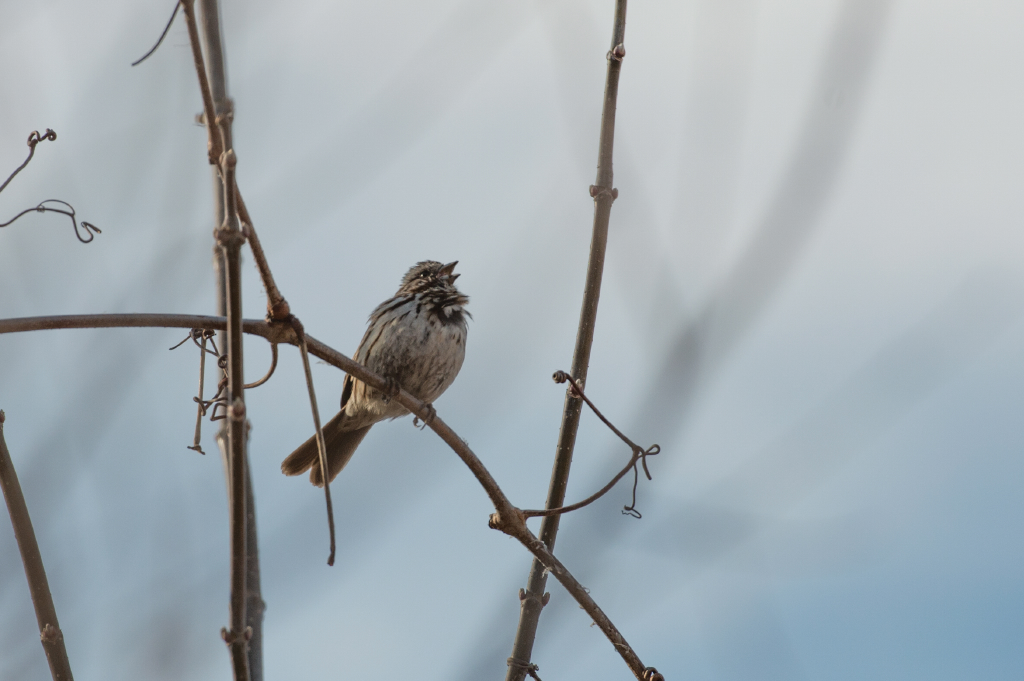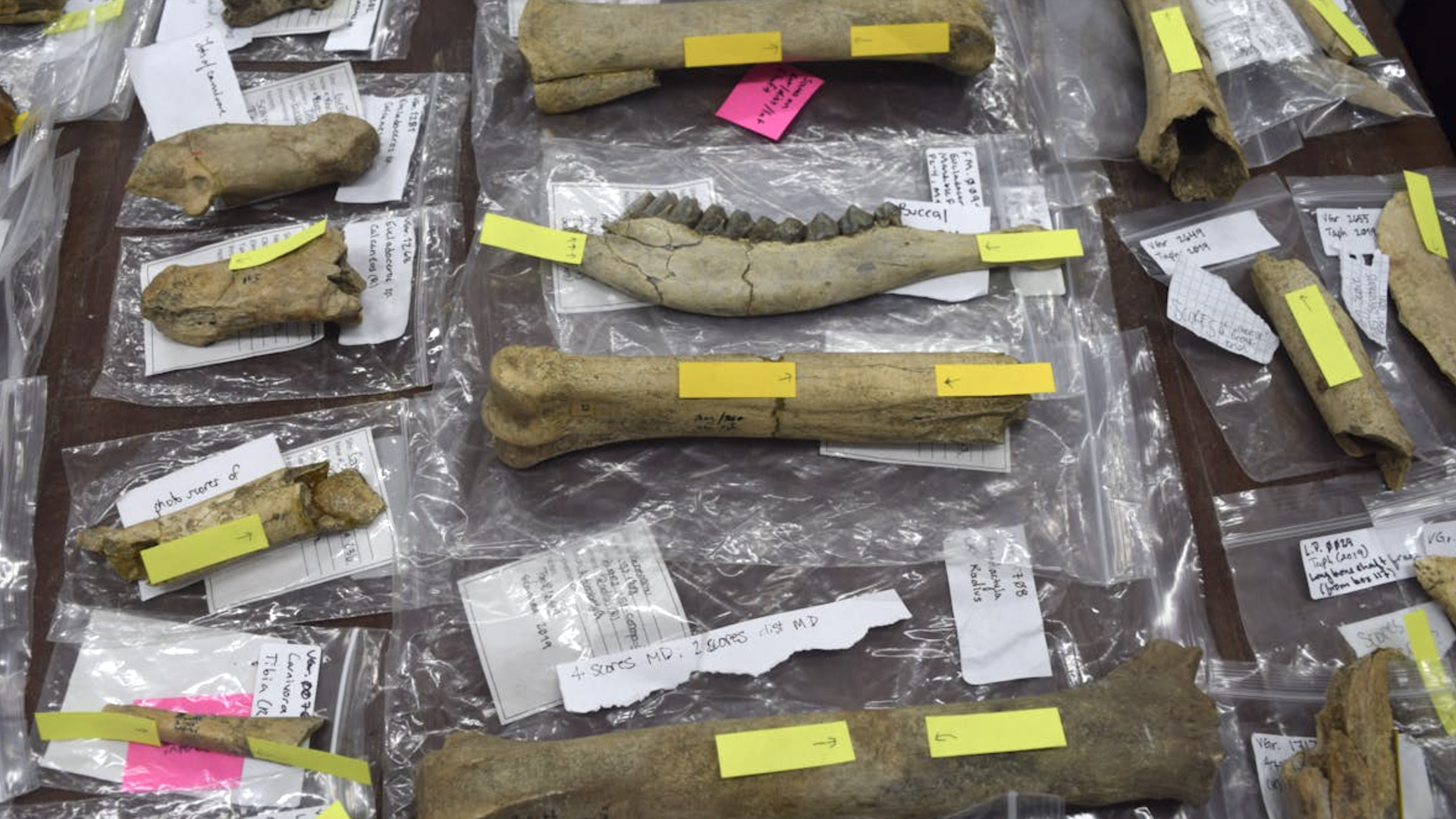
Bird Migrants Offer a Glimpse of the Planet's Health

David Oehler is curator of ornithology for the WCS (Wildlife Conservation Society) at its Bronx Zoo. He contributed this article to Live Science's Expert Voices: Op-Ed & Insights.
During the peak spring migration in May, millions of birds make their way up the U.S. East Coast on the Atlantic Flyway from places as far away as Tierra del Fuego in Chile. As they touch down in the parks of New York City for a rest, the warblers, vireos, thrushes, woodpeckers, ducks and many other birds making the trip ignite the imagination with their beauty and ability to conquer the air.

Grabbing attention for their fantastic variety of sizes, plumage, color, and calls, birds are also critical for scientists: They are ecological indicators of a healthy habitat and can be among the first species to suffer when climate change, habitat loss, chemical or oil pollution, or infectious diseases take root in an ecosystem. Many species of migratory shorebirds are sadly in decline. The wintering wetland habitats of several species have been compromised around the world, shrinking the populations of a range of species, from bar-tailed godwits in Australia to semi-palmated sandpipers in South America. As a result, shorebirds, which travel thousands of miles back and forth every year, are declining more than other species. In fact, there has been a 50 percent drop in long-term migration for 19 U.S. shorebird species since 1974, according to the 2014 State of the Birds Watch List compiled by the North American Bird Conservation Initiative. [Amazing Migration: Photos of Sandhill Cranes ]
Saving species that share the sky
Conservation is becoming more critical. For example, migratory birds that breed in Arctic Alaska are nesting earlier due to snowmelt occurring earlier in the season, according to a 2014 study by WCS and partners from the Audubon Society of Portland; University of Alaska at Fairbanks; and the U.S. Geological Survey, Alaska Science Center.

Over the course of the nine-year study across four sites in western Arctic Alaska, scientists looked in nearly 2,500 nests of four shorebird species (the semi-palmated sandpiper, pectoral sandpiper, red phalarope and red-necked phalarope) and one songbird, the Lapland longspur. The researchers found the birds' nesting advanced earlier in the year by an average of four to seven days, which could impact breeding and population viability. That's because these birds may be arriving at the incorrect time, missing the peak of their food supply. The nutrient rich arthropods that they need may well be emerging on a separate schedule, leaving the birds less likely to produce viable eggs or properly rear their young.
A future for conservation
While it may seem that distant bird populations are disconnected from our everyday lives, conserving them and learning more about their habitats actually begins in our backyard and in our local parks.
For example, the Baltimore oriole and ruby-throated hummingbirds can be found nesting in NYC, but travel to Central and South America to survive during the harsh winters.

Environmental awareness starts when we are young, as we hike through parks, explore local streams, take up fishing, or have other experiences with nature to inspire awe (experiences that, alas, are becoming more uncommon with each passing year).
To celebrate the migration and boost awareness about conserving these wanderers , hundreds of bird enthusiasts, from novice to expert, participated in the second annual Bronx Zoo Birdathon on May 9. More than twenty guides from all over New York City helped birders locate and identify nearly 70 native species of birds — ones that either migrate through or live in the area year round — and celebrate the more than 220 living resident bird species at our zoos that serve as ambassadors to the wild habitats that WCS is working hard to conserve.
Sitting on 265 acres of hardwood forest transected by the Bronx River, New York City's only freshwater river, the Bronx Zoo offers migrating birds diverse habitats and access to water. Those features make it a perfect place for guests to catch a glimpse of the dozens of migratory bird species that stop here on their annual migration north, such as the yellow warbler, Blackburnian warbler, northern waterthrush and the white-rumped sandpiper.
Families participating in the Bronx Zoo Birdathon had the opportunity to build feeders and nest boxes for use in their own backyards. Proceeds from this year’s event will go in part towards conserving the Andean condor, one of the largest birds in the world and the official symbol of Argentina, Bolivia, Chile, Colombia, Ecuador, and Peru.
That said, you don't have to be a New Yorker or wait for our Birdathon to participate in this annual migration ritual.

Attracting birds to your yard
You can transform your backyard into a safe haven for birds and catch more than a glimpse of these long-distance migrating birds. One way is to build a birdhouse. Many birds like the security of nest cavities and will use nest boxes that you install in your yard.
While many people buy bird feeders to attract birds, you can also plant trumpet vine, raspberries and other fruiting trees to provide for these animals' nutritional needs. Remember that your backyard is valuable natural real-estate.

Other plantings, such as evergreens, provide shelter from predators to build nests and cover in the wintertime.
And, don't forget that all of us, including birds, need water. Shallow birdbaths provide birds with a clean supply of water that they need every day to drink and keep their feathers in good condition.
Making your backyard a bird-friendly environment will not only help protect these birds, but also give you and your family hours of enjoyment.
If you are lucky to live along one of the great flyways of North America, take another glimpse at the birds outside your window. They may have been in South America last month. They may be in Canada two weeks from now. One thing is for certain: wherever you live, the marvels of the springtime birding beckon!
Follow all of the Expert Voices issues and debates — and become part of the discussion — on Facebook, Twitter and Google+. The views expressed are those of the author and do not necessarily reflect the views of the publisher. This version of the article was originally published on Live Science.
Sign up for the Live Science daily newsletter now
Get the world’s most fascinating discoveries delivered straight to your inbox.










